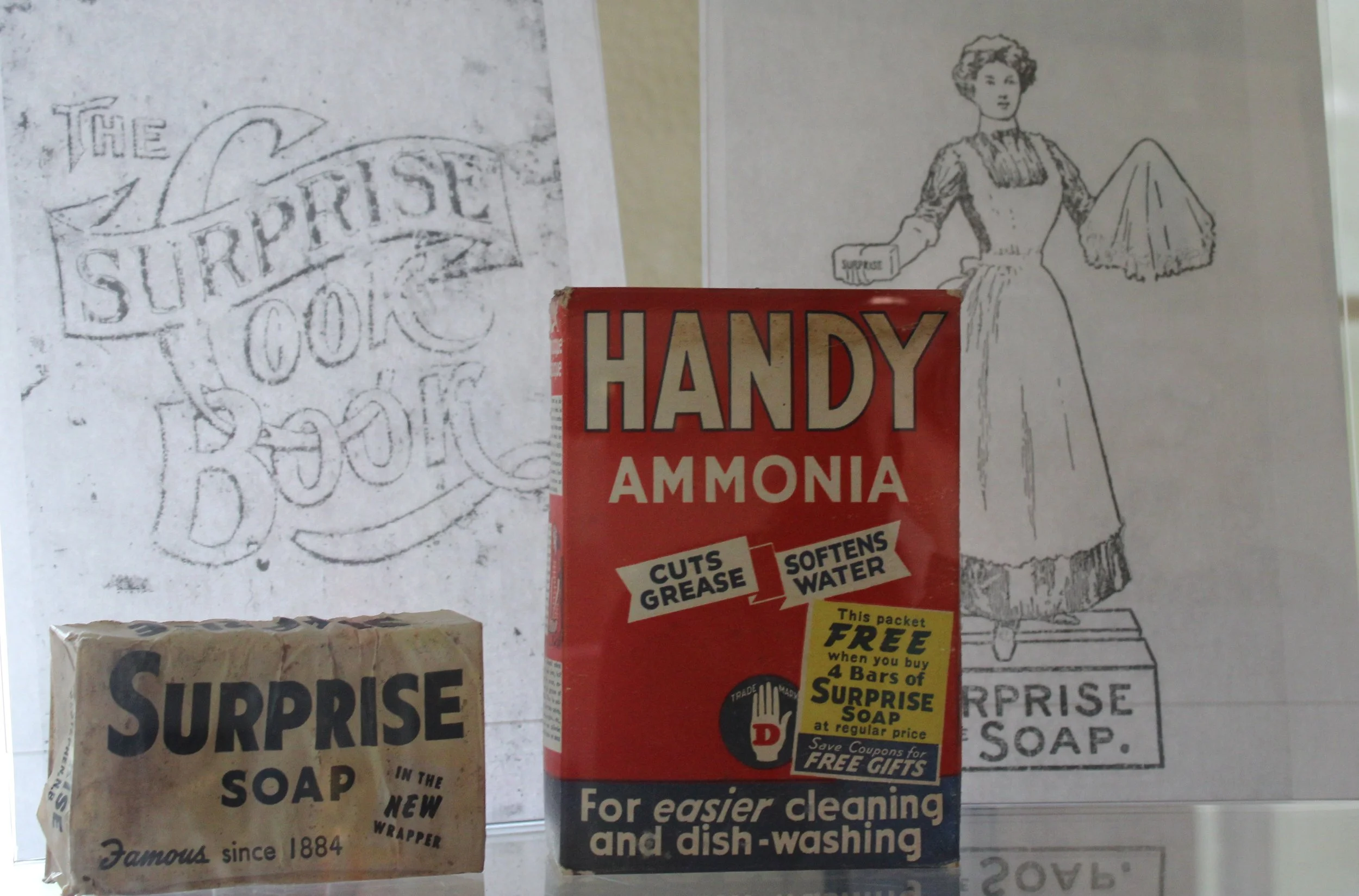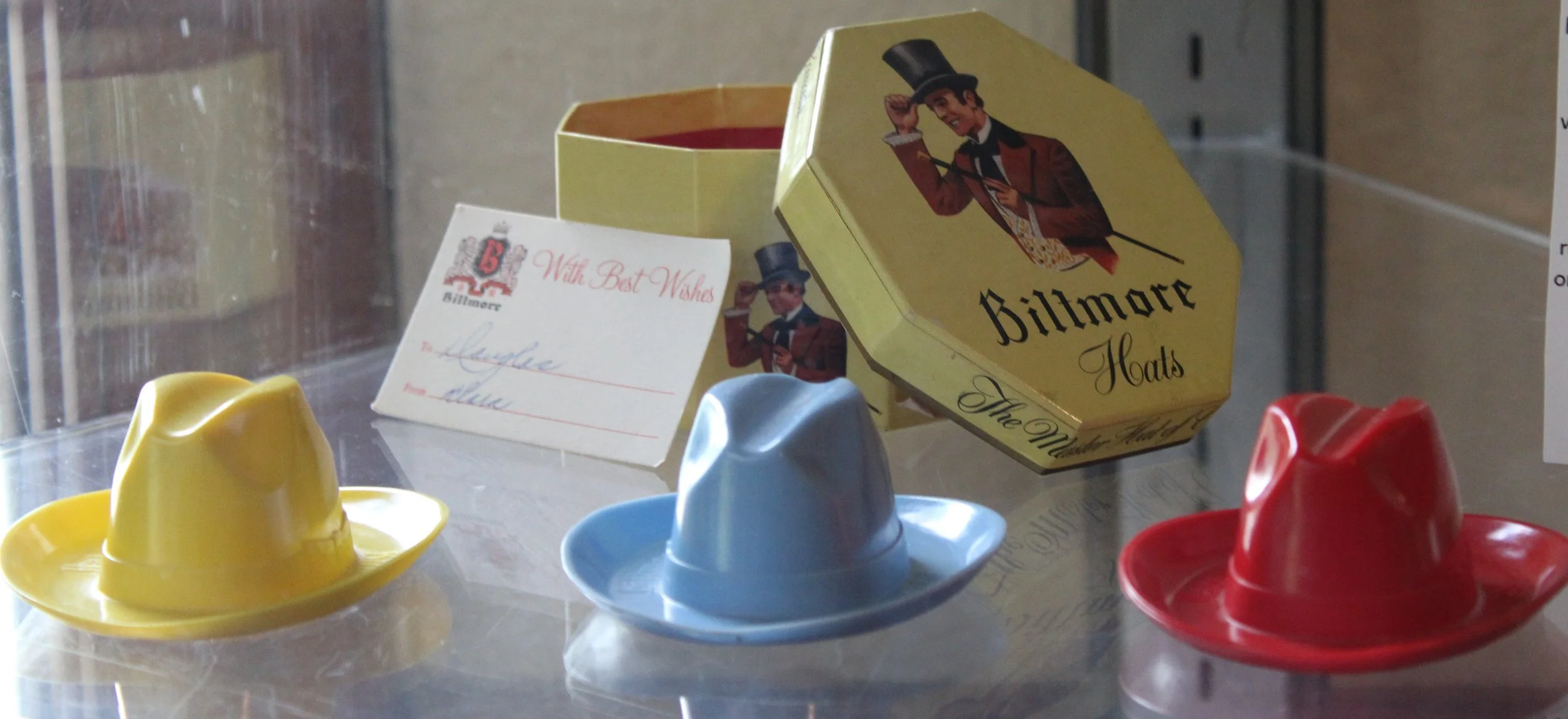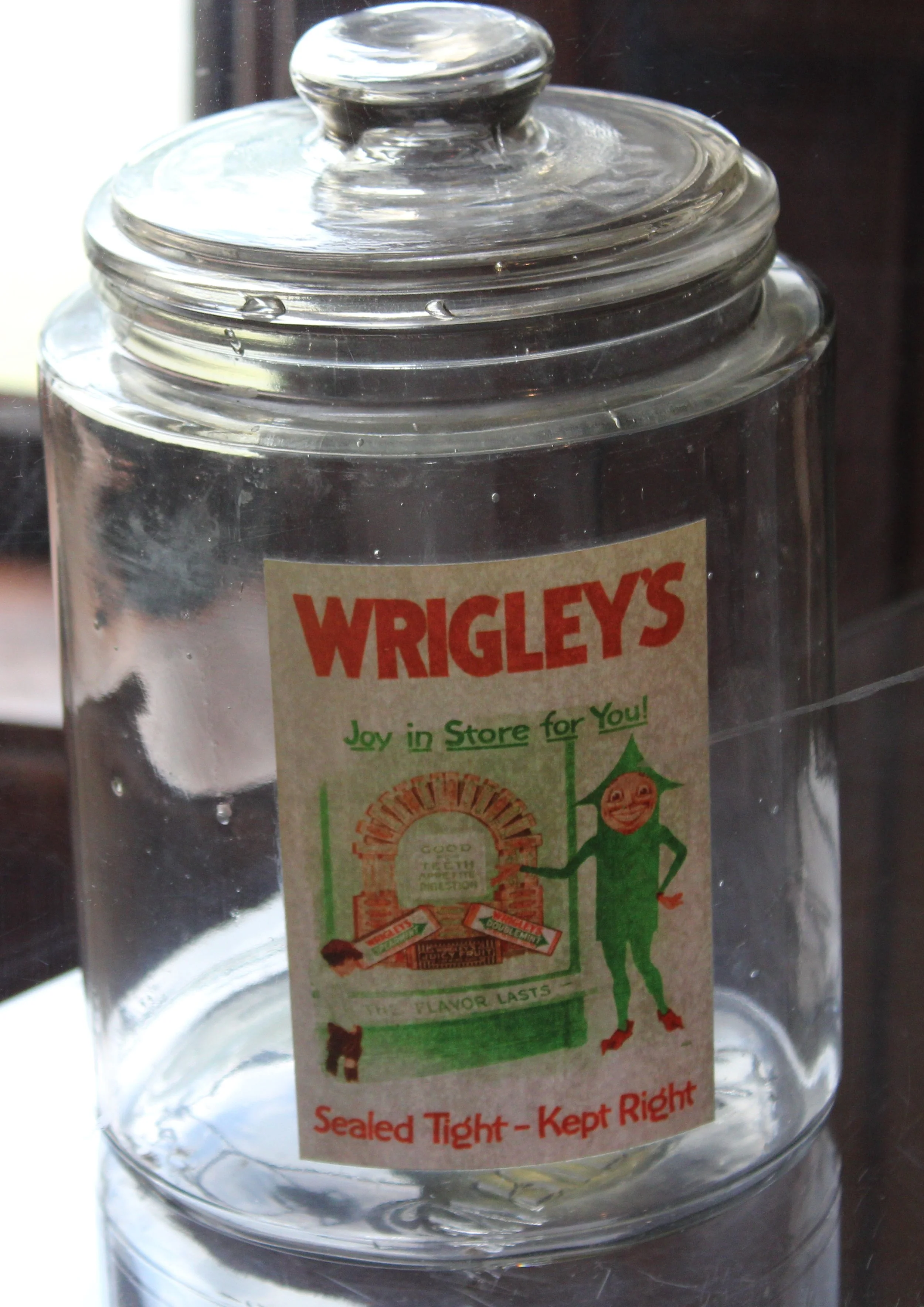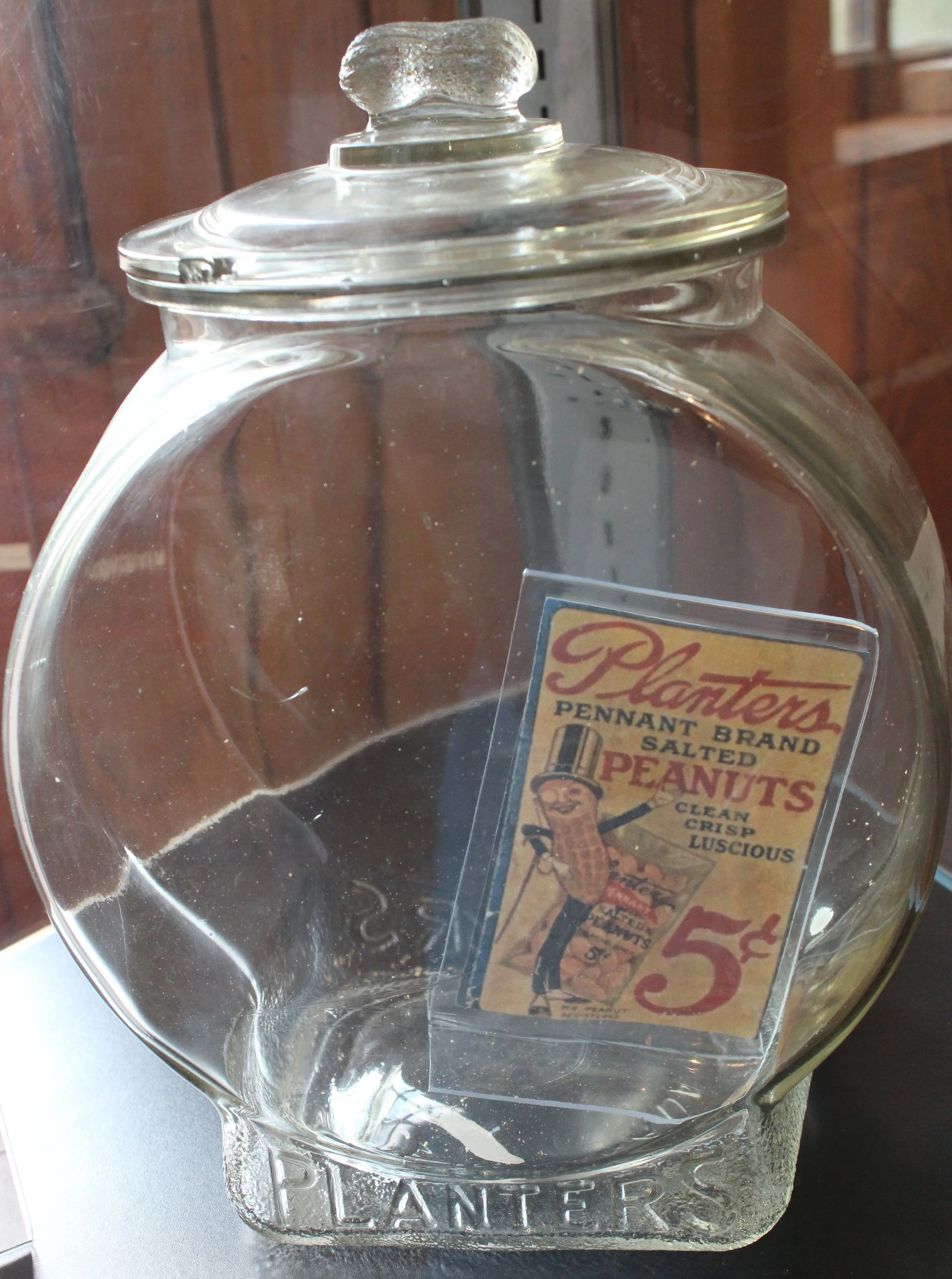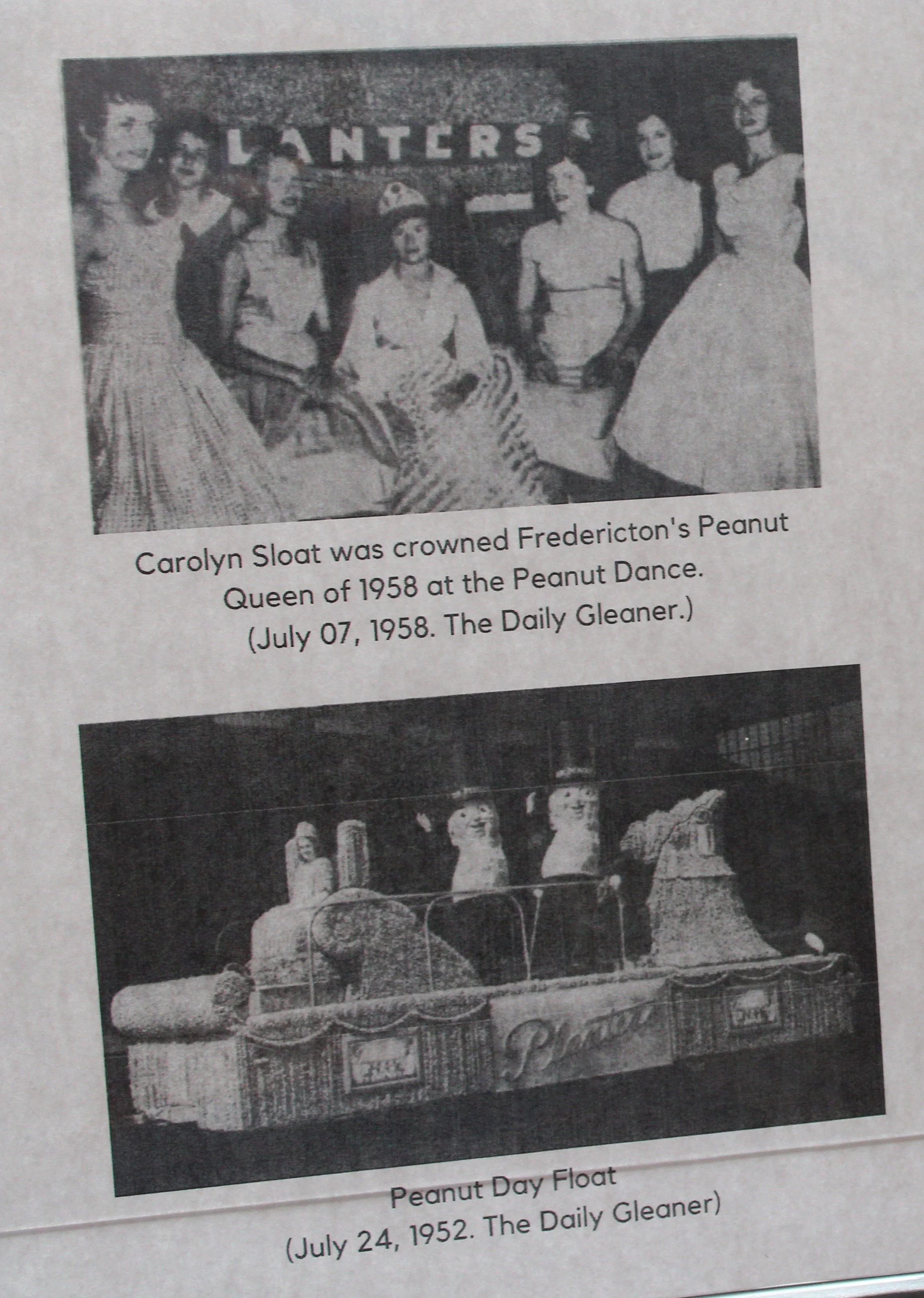Some of Our Advertising Collection
(Click or tap images to expand)
The St. Croix Soap Factory was opened in St. Stephan in 1884 by James Ganong. Here, they manufactured their famous laundry bar “Surprise Soap”. Surprise Soap was one of the first Canadian-made products to attach both regular coupons and premium coupons to their products. Some coupons could be used towards the purchase of more soap, or a related product. Premium coupons could be used towards the redemption of objects found in a Premium Booklet. These prizes could range from silverware to artwork and cookbooks.
Biltmore Hats was a Canadian hat company originally founded in Niagara Falls in 1917 as Fried Hat Co and moved to Gulph and rebranded in 1919-1920. The company’s most interesting advertising ploy was hat-shaped gift vouchers. Instead of a regular paper gift certificate, people could buy a particular hat style in advance as a gift and would be given a small hat-shaped token in a miniature hat box. The colour of the token would reflect which style had been purchased. These tokens would later be redeemed at Biltmore retailers in the correct size.
Wrigley’s used premiums but focused their gifting efforts on the retailers. While the use of retail-ended premiums was in many ways revolutionary, what is more interesting about Wrigley's advertising is the Spearman, the company mascot introduced in 1915. The Spearman was one of the first company advertising mascots and his presence was meant to capture the nostalgia and childlike fun of chewing gum.
Planters used a variety of marketing strategies including having an early and easily recognizable mascot, Mr. Peanut, in their print ads and on their products. Additionally, they also maintained their 5-cent price and used clear packaging, when possible, to show the quality of their personal-sized servings of nuts.
Local advertisements for Planters often centred around the Planters-themed “Peanut Week”. This festival would use the Planters name and imagery in a nut-selling campaign that raised money for different charities. This week would be sponsored by local organizations, like the Y Service Clubs, and would end with a Peanut Day which hosted a parade and dance. At the dance, the young woman who sold the most nuts would be crowned the “Peanut Queen”. These events happened in New Brunswick's three cities through the 1940s-60s period.

